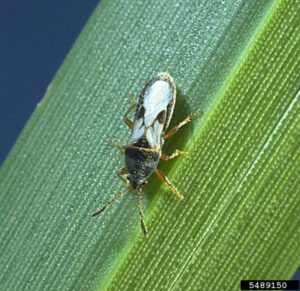Chinch Bugs and St. Augustine Lawns
go.ncsu.edu/readext?867832
en Español / em Português
El inglés es el idioma de control de esta página. En la medida en que haya algún conflicto entre la traducción al inglés y la traducción, el inglés prevalece.
Al hacer clic en el enlace de traducción se activa un servicio de traducción gratuito para convertir la página al español. Al igual que con cualquier traducción por Internet, la conversión no es sensible al contexto y puede que no traduzca el texto en su significado original. NC State Extension no garantiza la exactitud del texto traducido. Por favor, tenga en cuenta que algunas aplicaciones y/o servicios pueden no funcionar como se espera cuando se traducen.
Português
Inglês é o idioma de controle desta página. Na medida que haja algum conflito entre o texto original em Inglês e a tradução, o Inglês prevalece.
Ao clicar no link de tradução, um serviço gratuito de tradução será ativado para converter a página para o Português. Como em qualquer tradução pela internet, a conversão não é sensivel ao contexto e pode não ocorrer a tradução para o significado orginal. O serviço de Extensão da Carolina do Norte (NC State Extension) não garante a exatidão do texto traduzido. Por favor, observe que algumas funções ou serviços podem não funcionar como esperado após a tradução.
English
English is the controlling language of this page. To the extent there is any conflict between the English text and the translation, English controls.
Clicking on the translation link activates a free translation service to convert the page to Spanish. As with any Internet translation, the conversion is not context-sensitive and may not translate the text to its original meaning. NC State Extension does not guarantee the accuracy of the translated text. Please note that some applications and/or services may not function as expected when translated.
Collapse ▲If you have a St. Augustine lawn, you may want to take a really close look at the grass near the soil. Chinch bugs (Blissus insularis Barber) can do a lot of damage in a short amount of time, especially when the numbers build up. They are true bugs so they have piercing-sucking mouth parts that cause all the damage.
They can typically be found at the soil line. Getting down on the ground and looking through the base of the plants is one way to look for this pest. It is very small with the adults being about ¼ inch long and black and white in color. The immature stages look very similar to the adults but much smaller.

Southern Chinch Bug, David Shetlar, The Ohio State University, Bugwood.org
They are more often found on St. Augustine grass, but can also be found on any of the other common turfgrasses grown in home lawns in our area. If you have irregularly shaped dead patches in your lawn, it’s worth a closer look to see if you have chinch bugs.




